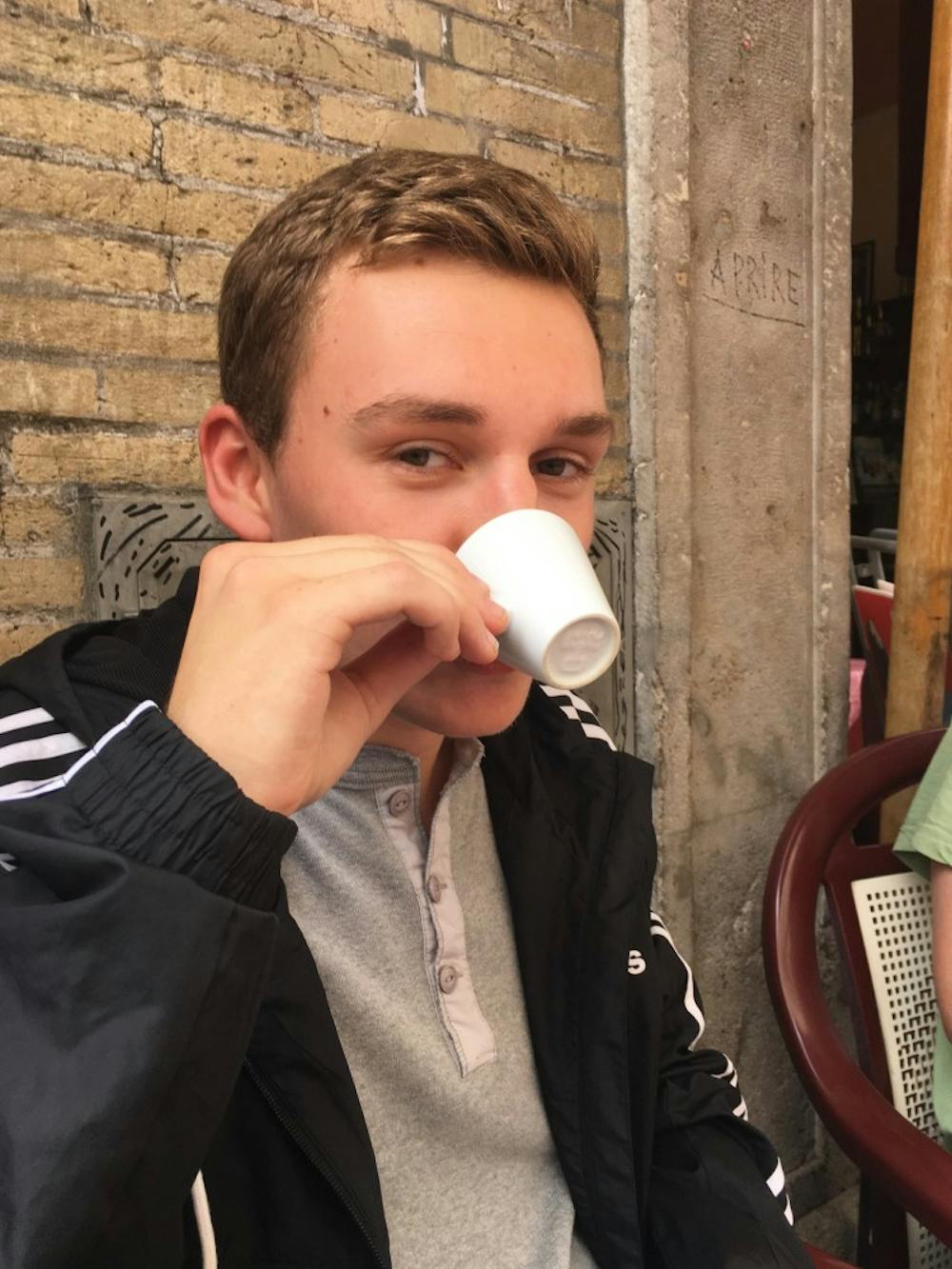The ancient crest of the town of Siena, Italy, is enthralling for its simplicity — a simple outline of a shield, the top half white, the bottom half black.
According to legend, the origin of the crest harkens back to the epic founding of Rome in around 750 B.C. Rome was founded by two demigod brothers — Romulus and Remus, sons of Mars, the ancient God of War. Mars abandoned the boys, and they were subsequently raised and nursed by a mythical she-wolf instead of a human mother.
Perhaps predictably, given their unconventional home life, the brothers were rather aggressive characters — eventually, Romulus killed Remus in a dispute about where their great city should stand. Remus, despite his early end, left behind two sons named Senius and Aschius. When their father was killed, Senius and Aschius fled south, one riding a black horse, the other riding a white horse. Eventually, they arrived in Tuscany and established Siena, and the crest was fashioned to commemorate the horses they rode on their journey.
To me, the crest looks suspiciously like a tiny porcelain espresso cup filled up halfway with black coffee.
I’m three weeks into a semester abroad here in Italy, and from what I’ve seen so far, a cup of espresso would be an entirely appropriate coat of arms. The country’s coffee tradition dates back centuries, when traders first brought it over from northern Africa. Despite its instant popularity, many in the Church felt the drink was impure and sinful due to its Arabic origins. When clergymen urged Pope Clement VIII to ban the devilish drink, the Pope insisted on trying it first. Legend has it he took one sip, turned to his advisors, and said something along the lines of “My guy, have you actually tried this s—t?” and thus began Italy’s great coffee tradition.
I love coffee. I take great pleasure in parking myself in a cafe for hours at a time, slowly working my way through a gallon or two. This is part of the reason why I chose to study abroad in Italy. I dreamt of lollygagging in the beautiful cafes of Siena, soaking in the history and the architecture while I leisurely enjoyed an endless stream of drinks.
In Italy, however, this is not generally how it’s done. Here, ordering un caffè does not yield a 20-ounce jug of Pike Place but rather a two- or three-ounce shot of espresso in a tiny little teacup. Asking for an espresso is redundant, because all coffee is espresso — roughly equivalent to asking for “french fries made of potatoes” or “a Gus Burger that I will regret.”
If you want something similar to the coffee we have in the U.S., you can order an “americano” — but, in a masterstroke of subtle condescension, you will receive quite literally just a watered-down espresso. Needless to say, ordering a low-fat-skim-caramel-hot-yoga-Juice-Laundry latte is grounds for deportation. You don’t take your coffee to a table, but rather slurp it down in a few gulps while standing at the bar. Then you come back in two hours, then again two hours later, then again. If your eye ever stops twitching, you aren’t doing it right.
The coffee bar closest to my apartment is frequented by all sorts. There are old, rotund, leathery gentlemen — the last remaining wisps of their white hair slicked down the back half of their heads, briefcases in hand, two shirt buttons undone. There are younger men — lithe and animated, speaking quickly about the local soccer team, three shirt buttons undone. There are kids and grandmothers and glamorous women with their shopping bags hanging on their arms. All are equally comfortable sliding a coin across the bar and quaffing a few tiny sips of espresso. It’s in their blood — a ritual as serious and ancient as the city’s medieval streets.
Siena’s population today is 50,000, roughly the same as it was in 1345. The walls still enclose a tightly packed, intimate warren of cobblestone streets. The windows have looked down at the same cafes for 700 years. The coat of arms is emblazoned on many walls in slightly chipped paint and the stones on the streets are worn by centuries of feet. Statues of saints and popes and she-wolves and demigods dot every square. Every espresso machine gleams an immaculately polished silver. This is an old city, full of traditions and legends. The only way to learn them all is to stay caffeinated.







